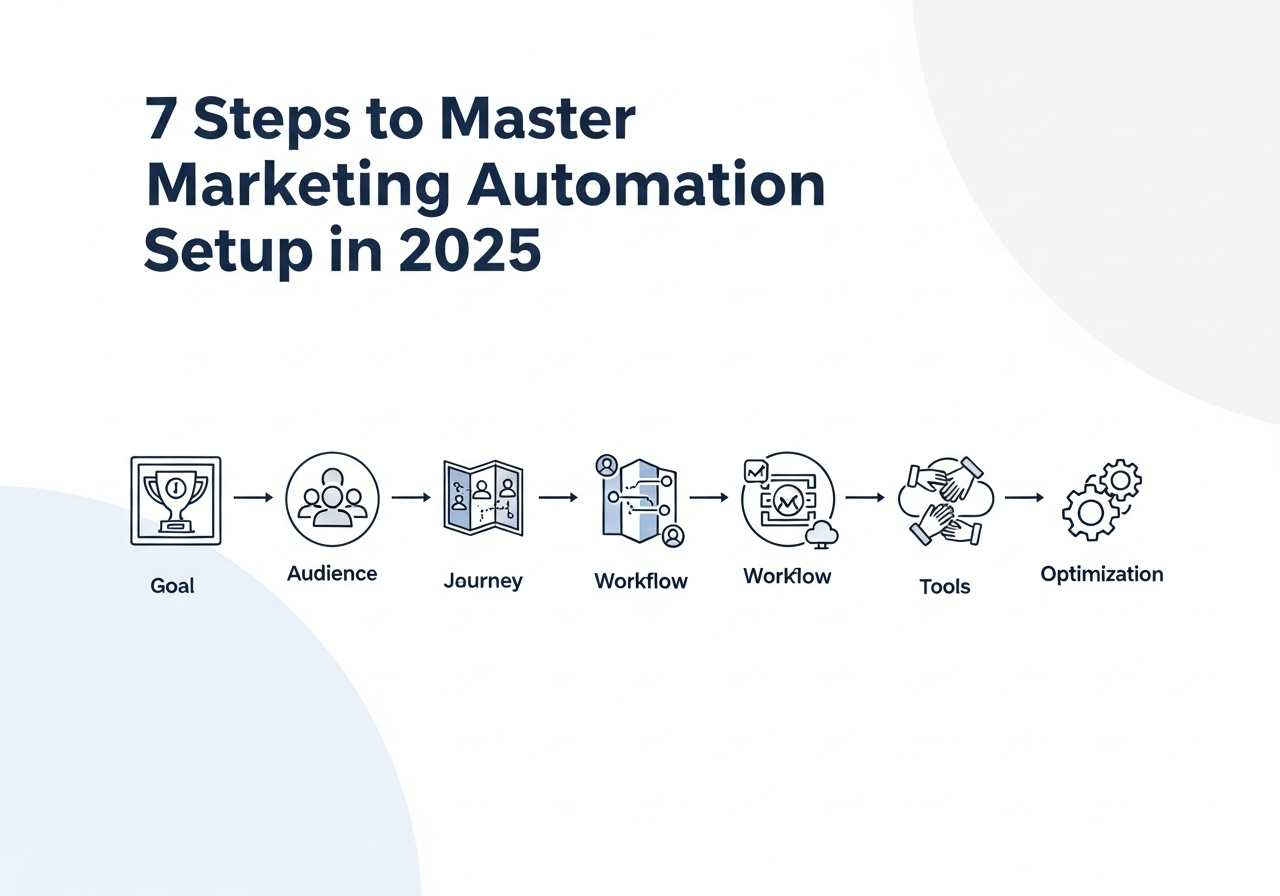Why Marketing Automation Matters More Than Ever
Are you still manually following up with leads, sending one-off emails, or struggling to keep up with your growing customer base? Here’s a fact: for every $1 spent on marketing automation, businesses see an average return of $5.44—and most achieve payback in less than six months. If you’re not already leveraging marketing automation, you’re missing out on serious growth, efficiency, and revenue gains.
Marketing automation isn’t just a trend—it’s a strategic necessity for businesses aiming to thrive in today’s fast-moving digital landscape. With customer expectations for personalization at an all-time high, manual marketing simply can’t keep up. Consequently, automation empowers you to:
- Streamline repetitive tasks and free up your team for high-value work
- Deliver personalized, timely messages across every channel
- Scale campaigns without scaling your headcount
- Gain actionable insights and continually optimize performance
Ultimately, the question isn’t whether you should automate, but how to set up marketing automation for maximum impact. Let’s break down the steps, best practices, and real-world examples to ensure your setup drives real results.
Step 1: Set Specific, Measurable Goals
Before diving into tools or tactics, you must clarify what you want to achieve. Are you aiming to increase lead generation, nurture prospects, boost sales, or improve retention? Setting clear, measurable goals will guide every decision in your automation journey.
- Define KPIs: Focus on metrics such as open rates, conversion rates, sales, or customer lifetime value.
- Align with Business Objectives: Tie automation goals directly to broader company objectives.
- Avoid Data Overload: Concentrate only on metrics that directly influence your goals.
Step 2: Know Your Audience Inside Out
Effective automation relies on a deep understanding of your buyers. Therefore, you should develop detailed personas by gathering data through surveys, interviews, website analytics, and sales team feedback.
- Map Key Details: Outline demographics, behaviors, pain points, and motivations.
- Segment Your Audience: Group your audience for targeted, relevant messaging.
- Continuously Update: Refresh personas as you gather new insights.
Step 3: Map the Customer Journey
To automate effectively, outline the key stages your customers move through—from their first interaction to loyal advocacy. This process helps you identify where automation can add the most value at each step.
- Awareness: Use welcome emails and educational content.
- Consideration: Provide product recommendations and case studies.
- Purchase: Send cart abandonment reminders and limited-time offers.
- Retention: Implement loyalty programs and re-engagement campaigns.
Step 4: Design Smart Automation Workflows
Now, it’s time to draft workflows that guide leads through your funnel based on their actions and preferences. Think in terms of triggers (what starts the automation), actions (what happens), and goals (the desired outcomes).
- Example Workflow: A new lead downloads an eBook (trigger), receives a welcome email series (action), and is converted to a product demo (goal).
- Best Practices: Keep flows simple at first and iterate with real data. Use tags and custom fields to track user behavior, and always include clear CTAs in every message.
Step 5: Choose the Right Marketing Automation Platform
Not all automation tools are created equal. You should choose a platform that aligns with your goals, integrates with your CRM, and supports multi-channel execution: email, SMS, ads, and more.
- Unified Customer Database: Look for real-time personalization and segmentation.
- Multi-channel Campaign Management: Ensure you can reach customers on various platforms.
- Advanced Reporting: Get analytics to measure your success.
- Seamless Integrations: Check compatibility with your existing tech stack.
Step 6: Collaborate Across Teams for Seamless Execution
Marketing automation isn’t just a marketing function. In fact, sales, product, and support teams must be involved to ensure smooth handoffs and a cohesive customer experience.
- Define Handoffs: Establish clear lead handoff processes and scoring criteria.
- Build Shared Dashboards: Promote transparency across departments.
- Align Messaging: Coordinate messaging and timing across all teams.
Step 7: Implement, Test, and Optimize
Before hitting ‘go’, thoroughly test every workflow—because broken flows can kill trust and lose leads.
- End-to-End Testing: Test all triggers and actions completely.
- Check Deliverability: Verify email deliverability and ensure all links work.
- A/B Test Everything: Experiment with subject lines, CTAs, and content.
- Preview on All Devices: Check the user experience on mobile and desktop.
Once live, monitor your results closely. Track key metrics and adjust your strategy to maximize conversions and ROI.
Real-World Success: Case Studies
Here are some examples that prove the power of automation:
- Premier Company: Implemented automated price drop emails, achieving a 73% open rate and 12% click rate—resulting in a significant sales boost.
- Thomson Reuters: By integrating marketing automation, they reduced lead-to-conversion time by 72%, increased marketing-attributed revenue by 175%, and handed off 23% more qualified leads to sales.
Best Practices for Marketing Automation in 2025
- Keep it simple: Don’t overcomplicate workflows—start small and iterate.
- Personalize at scale: Use unified data and dynamic content to tailor messages for each segment.
- Integrate with CRM: Centralize data for a single source of truth and seamless automation.
- Monitor, analyze, and adapt: Let data guide your optimizations and stay agile as customer needs evolve.
Common Pitfalls to Avoid
- Setting up automation without clear goals.
- Over-automating at the expense of the human touch.
- Failing to test workflows before launch.
- Neglecting cross-team collaboration.
- Ignoring ongoing optimization.
Your Next Step: Take Our Free Assessment
Ready to find out exactly what’s missing in your marketing strategy and how automation can fill the gaps? Don’t leave your growth to chance. Visit us to get your custom growth plan and start transforming your marketing results today!
In summary: Setting up marketing automation requires clear goals, audience insight, mapped journeys, smart workflows, the right platform, cross-team collaboration, and relentless optimization. Follow these steps to unlock higher ROI, happier customers, and scalable growth in 2025 and beyond.



